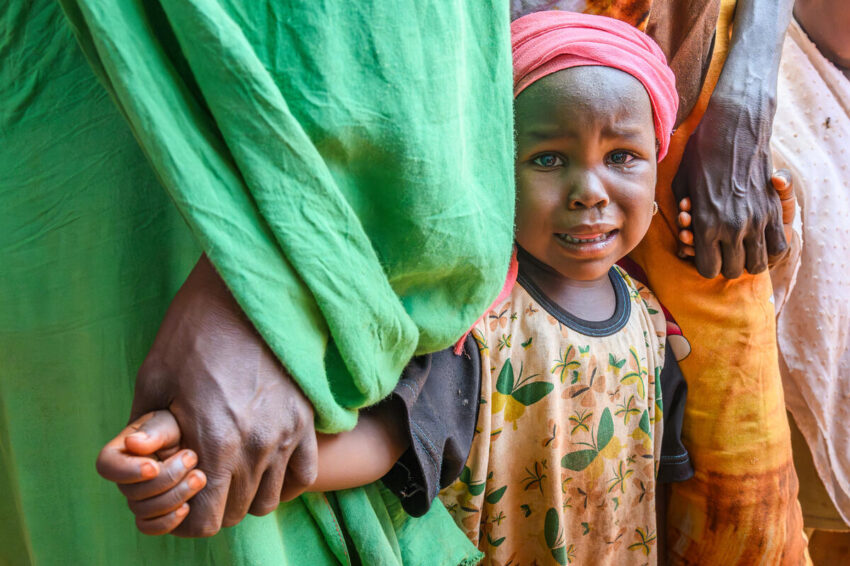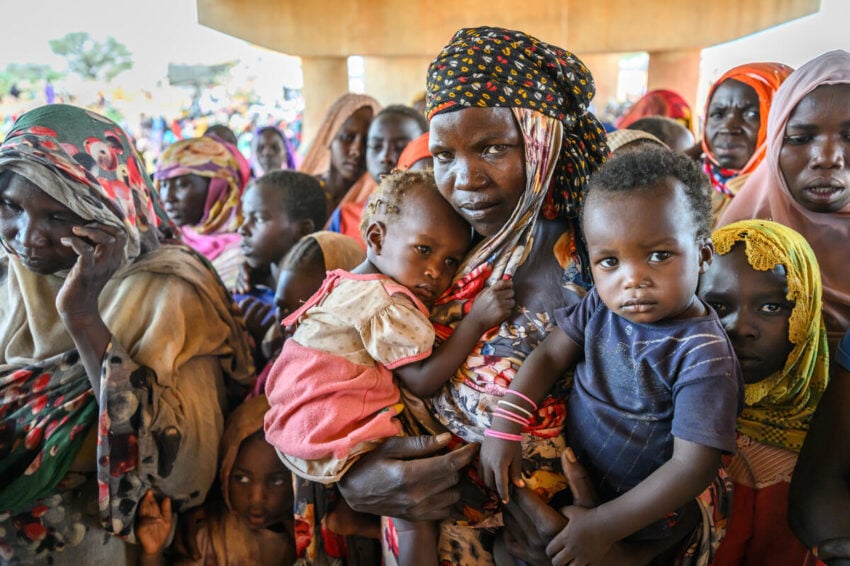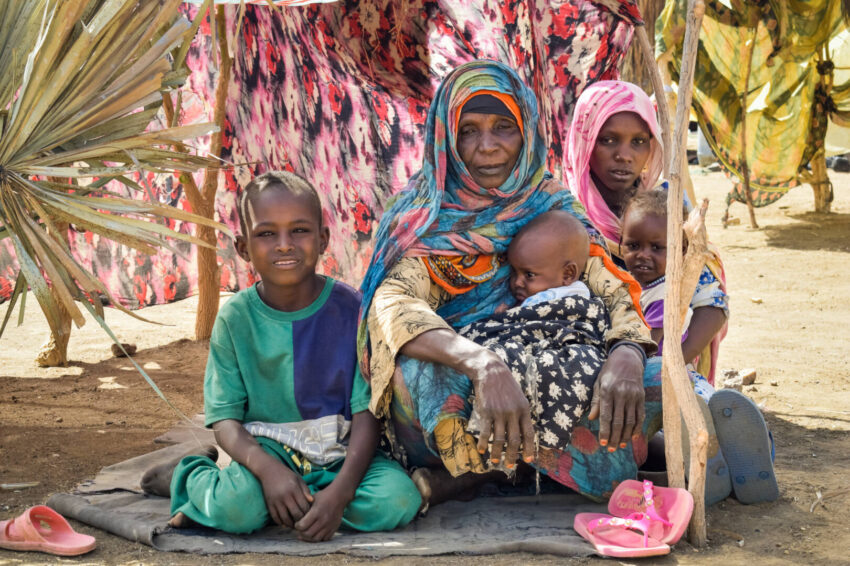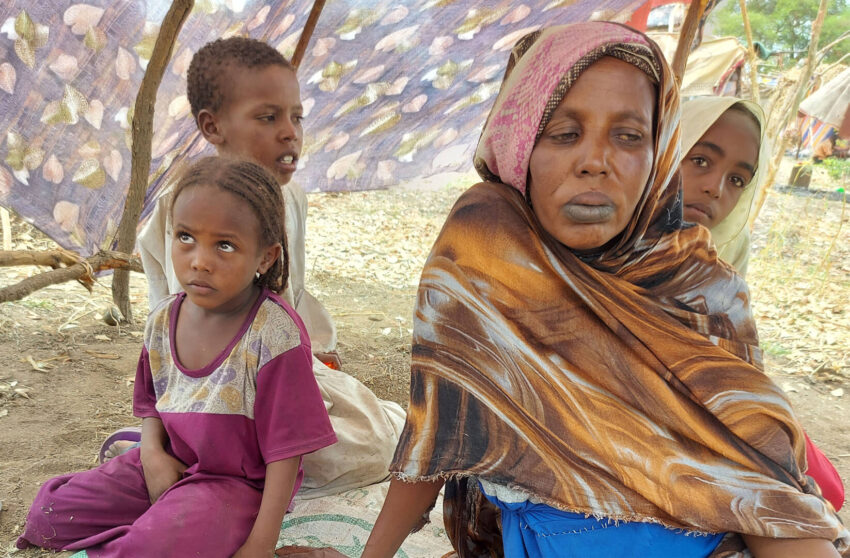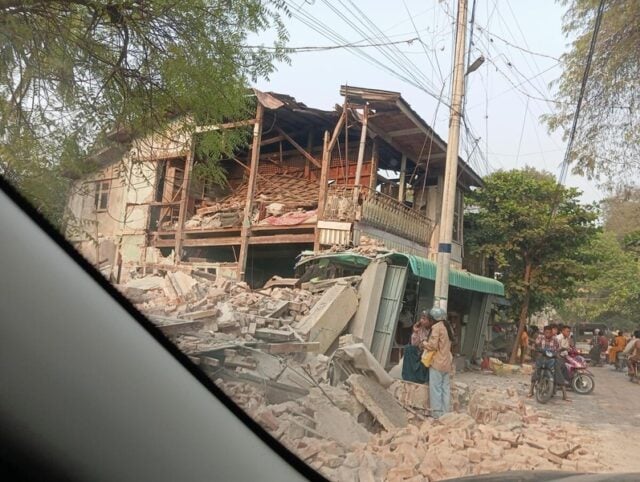Famine conditions confirmed in North Darfur, Sudan. Help now:
The conflict in Sudan has caused widespread destruction and displacement, forcing 14 million people from their homes since April 2023 and further intensifying the already critical hunger crisis.
Hundreds of thousands of people in Sudan are facing life-threatening food shortages. Famine conditions have been confirmed in a displacement camp in North Darfur that shelters an estimated 400,000 people.
The impact on women and girls has been particularly severe. Millions of women and girls are experiencing the immediate threats of violence and displacement and struggling with severe food insecurity. This dire situation has heightened their vulnerability to violence.
Sudan now has the highest number of displaced children globally. The escalating food crisis has pushed much of Sudan to the brink of famine, leaving families struggling for every meal and often going days without enough food. Millions of children are experiencing severe hunger and life-threatening conditions. World Vision has been at the forefront of Sudan relief efforts, delivering essential aid to those most in need.
Sudan crisis: Facts, FAQs, and how to help
- Fast facts: Sudan crisis
- What is the current situation in Sudan?
- Is Sudan at risk of widespread famine?
- What is the impact on women and girls?
- In what ways has the conflict in Sudan affected its people?
- How has the conflict impacted children in Sudan?
- How many people has World Vision supported in the crisis in Sudan?
- Where has World Vision worked in Sudan, and for how long?
- How can I help children and families affected by the crisis in Sudan?
Fast facts: Sudan crisis
- Mass displacement: As of September 30, 2024, 14 million people have fled their homes due to the widespread violence in Sudan. Of these, over 10 million people are internally displaced in Sudan.
- Acute food insecurity: Over half the population of Sudan (25.6 million people) faced crisis or worse conditions of food insecurity between June and September of last year.
- Extreme hunger: Parts of North Darfur, including the Zamzam camp, south of El Fasher, are experiencing famine conditions.
- Risk of famine: The Integrated Food Security Classification (IPC) Famine Review Committee (FRC) warns that other regions may face famine without swift humanitarian aid. Currently, 755,000 people are on the brink of famine (IPC 5).
- Health emergency: Disease outbreaks, including cholera, malaria, measles, and dengue fever, are rising due to disrupted health services.
- Education loss: With most schools closed or struggling to reopen, more than 90% of Sudan’s 19 million school-aged children have no access to formal education, jeopardizing their future.
- Humanitarian response: Since April 2023, World Vision has supported more than 2.9 million people in Sudan, most of them women and children, through emergency assistance programs focusing on food security; child protection; health and nutrition; water, sanitation, and hygiene; and more.
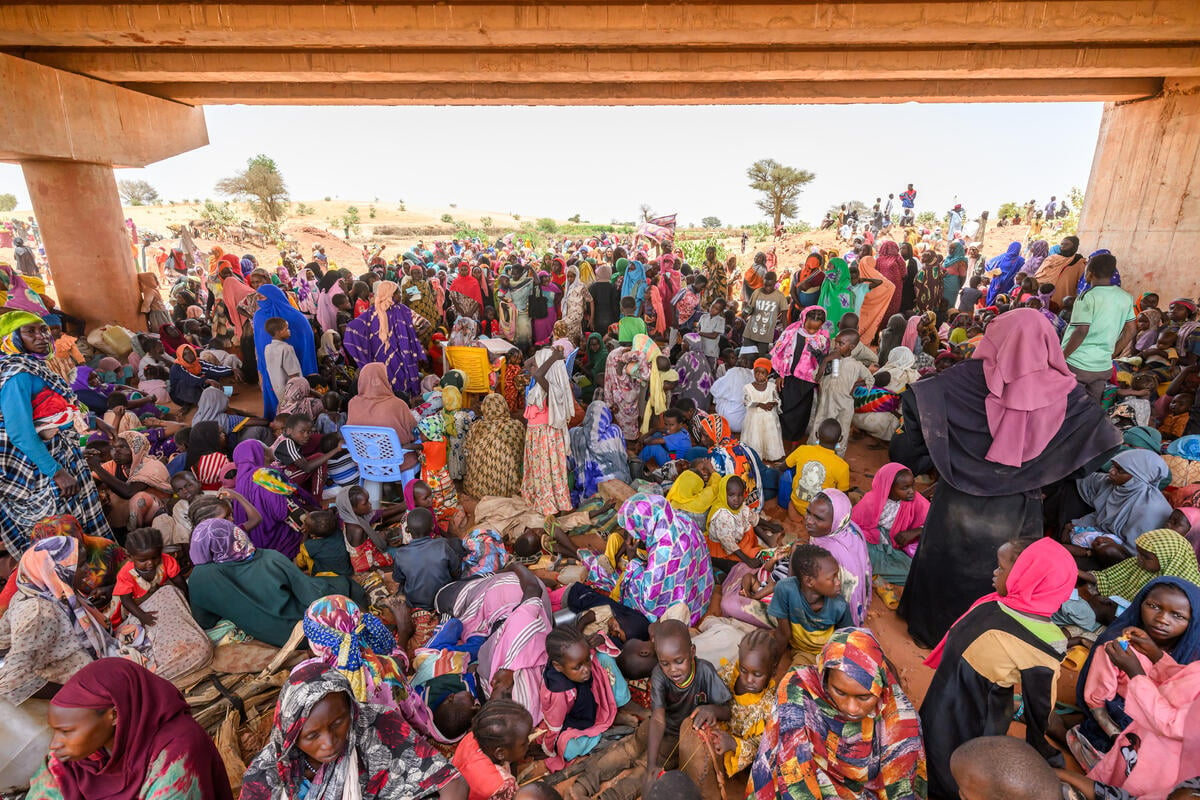
What is the current situation in Sudan?
Since April 15, 2023, conflict has triggered the world’s worst internal displacement crisis and the largest hunger crisis, affecting Sudan, South Sudan, and Chad, reports the World Food Programme.
“With refugee families at the Sudan–Chad border, I witnessed some of the worst conditions for children’s survival that I have ever seen,” said Edgar Sandoval Sr., president and CEO of World Vision, who visited in May. “The heat is unbearable at nearly 110 degrees. There is no water. There is no food. There is no shelter. You find all the things that you would want to run away from, and yet people are running toward them. So, you can only imagine the violence and the hunger that they’re running away from in Sudan. The suffering and desperation are at a massive scale, yet this is a crisis you hear almost nothing about. It deserves headlines. It deserves prime time. We know these children are equally precious to God. They deserve our attention. They deserve our help.”
Is Sudan at risk of widespread famine?
Famine conditions have been confirmed in North Darfur’s Zamzam camp, south of El Fasher, where ongoing fighting has intensified.
The last famine was declared in East Africa in South Sudan in 2017, and before that, Somalia in 2011. In both situations, hundreds of thousands of lives were lost, and children suffered long-term impacts from malnutrition and loss of agricultural outputs. The crisis in Sudan is similarly grim. The conflict between parties in Sudan is driving a hunger crisis dangerously approaching famine and is affecting millions of people.
Sudan has also been affected by climate shocks and below-average precipitation for the third season. The ongoing conflict, coupled with these poor weather conditions, has resulted in near-total harvest failures.
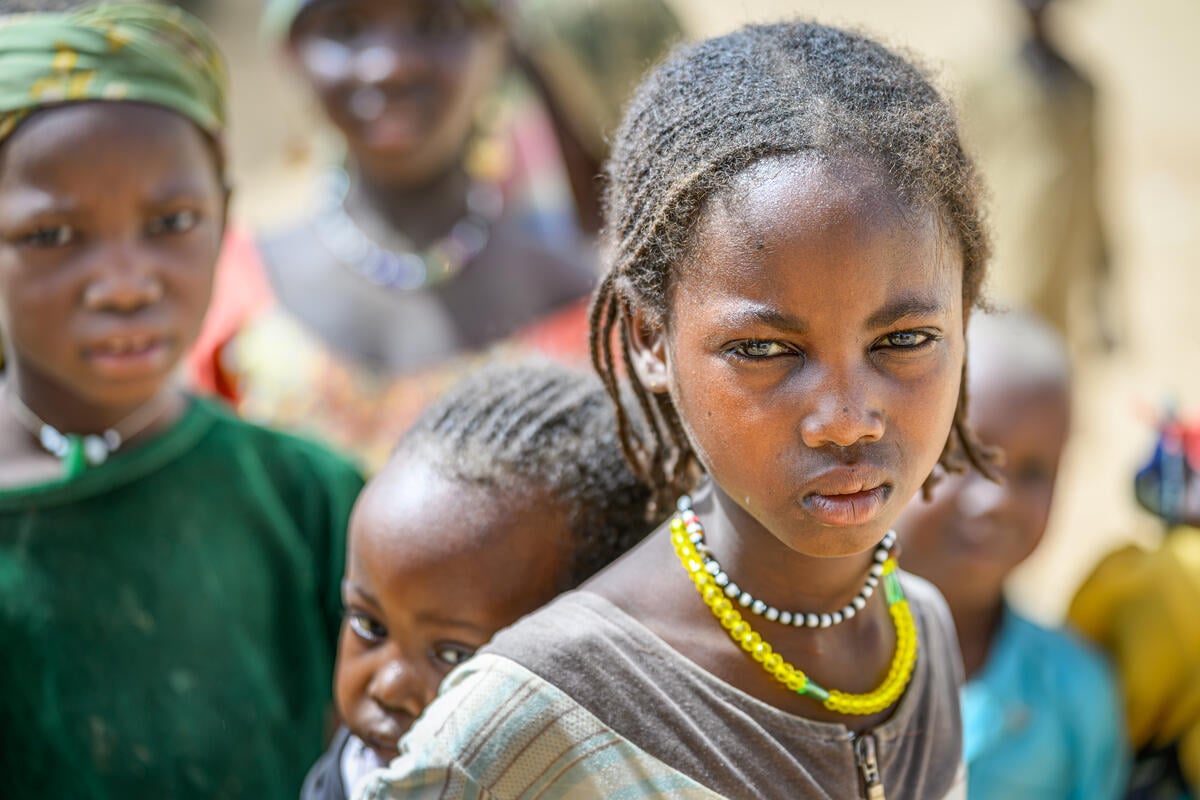
What is the impact on women and girls?
Women and girls are disproportionately affected by the crisis. An estimated 6.7 million women and girls in Sudan are at risk of various forms of violence, including physical, emotional, and sexual abuse — with displaced, refugee, and migrant women and girls facing heightened danger.
Widespread shortages of food and essential resources leave women struggling to provide for their families. Reports of violence are rising, and girls face increased risks of child marriage, hazardous work, and exploitation.
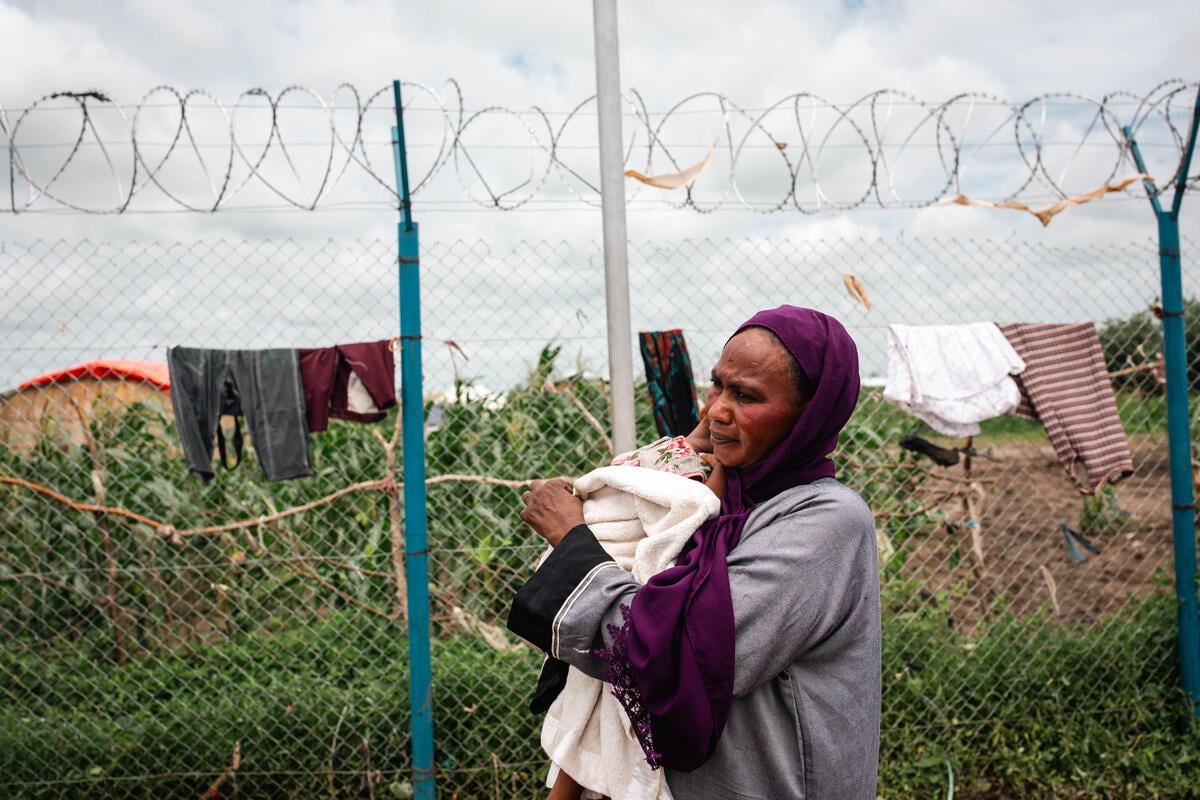
In what ways has the conflict in Sudan affected its people?
The ongoing conflict in Sudan has had devastating effects on its people, with the U.N.’s Office for the Coordination of Humanitarian Affairs (OCHA) reporting that 1 in 2 people in Sudan require humanitarian aid. Millions of people have been displaced and face immense uncertainty. Even before the conflict, many people faced hunger daily as a result of climate shocks, rising food prices, and political unrest.
The ongoing conflict has intensified pre-existing challenges, including:
- Acute shortages of food, water, medicines, and fuel, with prices of essential items and transportation sharply increasing.
- Limited or no access to healthcare services. Armed hostilities have affected a majority of health facilities in conflict zones, rendering them non-operational, and the remaining facilities are stretched beyond capacity.
- Forced displacement in various states, including Khartoum, Northern, Blue Nile, North Kordofan, North Darfur, West Darfur, and South Darfur. Many from these areas have fled to the neighboring countries of the Central African Republic, Chad, Egypt, Ethiopia, Libya, and South Sudan.
- Sexual violence, which has been reported with increasing frequency. Protection of children and women is an urgent priority.
- Fear and insecurity. Armed combatants have been occupying homes and reportedly some hospitals and schools, attacking water and electrical infrastructure.
“This is confirmation of our worst fears coming to fruition — that thousands of people, including vulnerable children, will die from starvation,” said Sandoval Sr. “My prayer is that this will be a wake-up call for the world to pay attention to what’s happening in Sudan and mobilize resources to help. We are calling for unhindered, consistent access for humanitarian workers to get aid to the people who most need it. We must act now.”
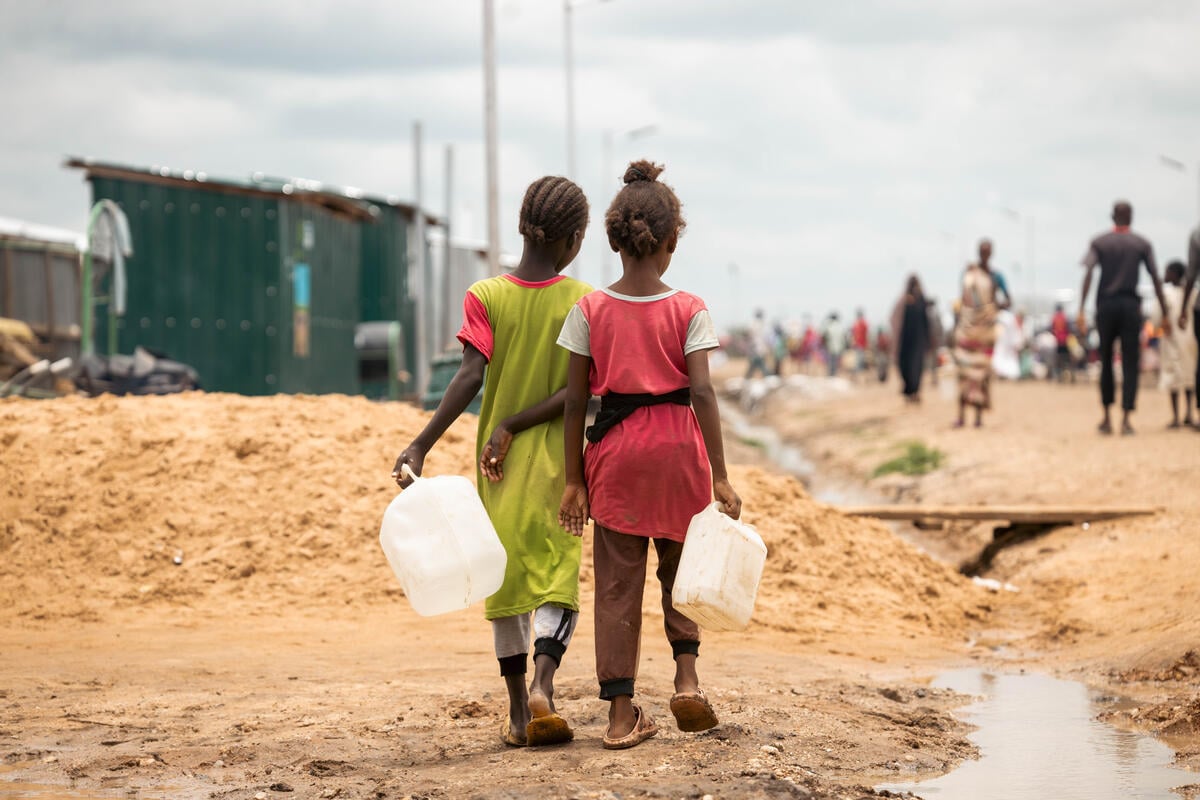
How has the conflict impacted children in Sudan?
Children are shouldering the heaviest burden of this devastating crisis, facing violence and hunger that threaten their lives and future opportunities. More children are displaced in Sudan than anywhere else in the world.
World Vision is deeply concerned about the profound long-term effects of hunger and food insecurity on the physical and cognitive development of Sudan’s children.
This multifaceted crisis also heightens protection concerns, especially for girls who are increasingly at risk of sexual exploitation, abuse, hazardous work, and child marriage. The ongoing violence has placed children at risk, forcing them and their families to flee from conflict and creating uncertainty about their future.
“When I get back home, I may not find anything to eat. This is frustrating me. I pray that the conflict ends soon so that we can live in peace and get back to school. I have dreams of becoming a doctor someday. We ask aid agencies to support us,” said 15-year-old Amani, who has been displaced due to ongoing hostilities.
The hunger crisis and ongoing conflict have also exacerbated one of the world’s worst education crises, where more than 90% of Sudan’s 19 million school-age children lack access to formal education. This disruption isn’t just a short-term problem; it poses long-term risks, potentially leading to a generational crisis. And tragically, many children may not make it to school age.
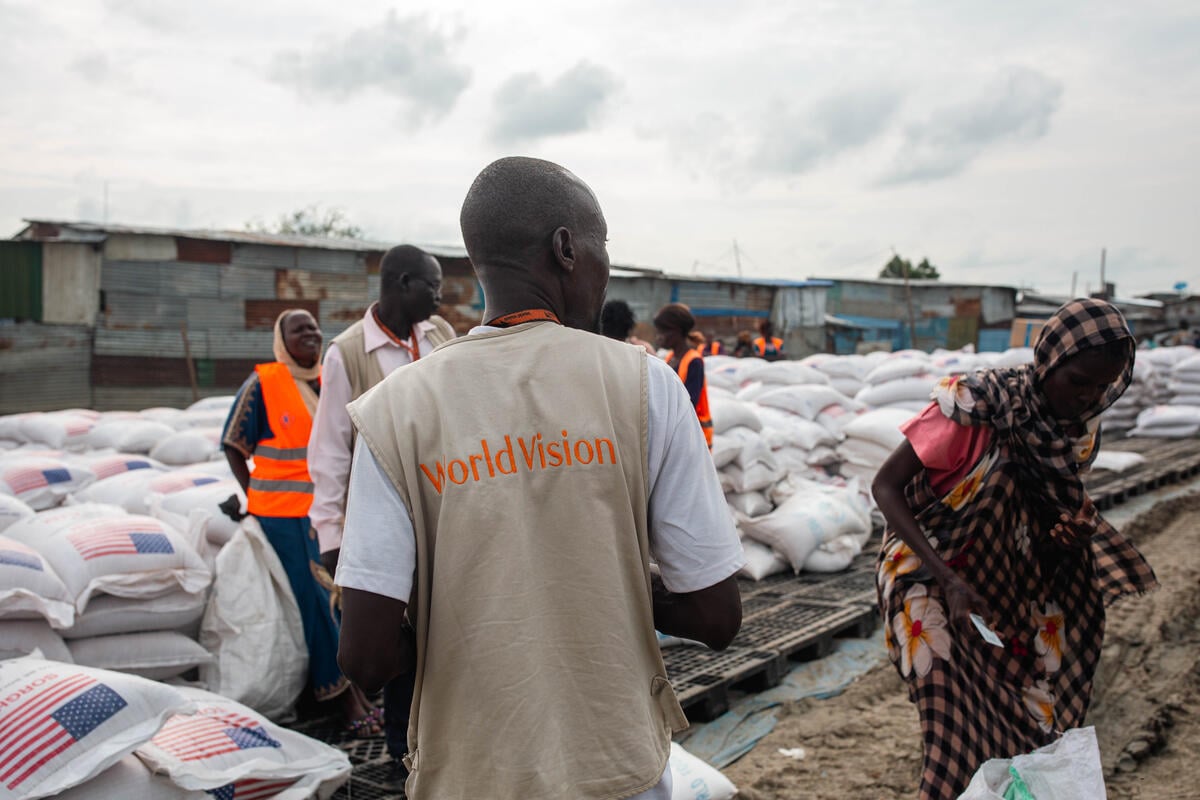
How many people has World Vision supported in the crisis in Sudan?
World Vision has reached more than 3.2 million people in Sudan and in the region since the start of our response in 2023, most of them women and children — delivering lifesaving aid including food, access to clean water, child protection support, health and nutrition programs, sanitation and hygiene solutions, and more.
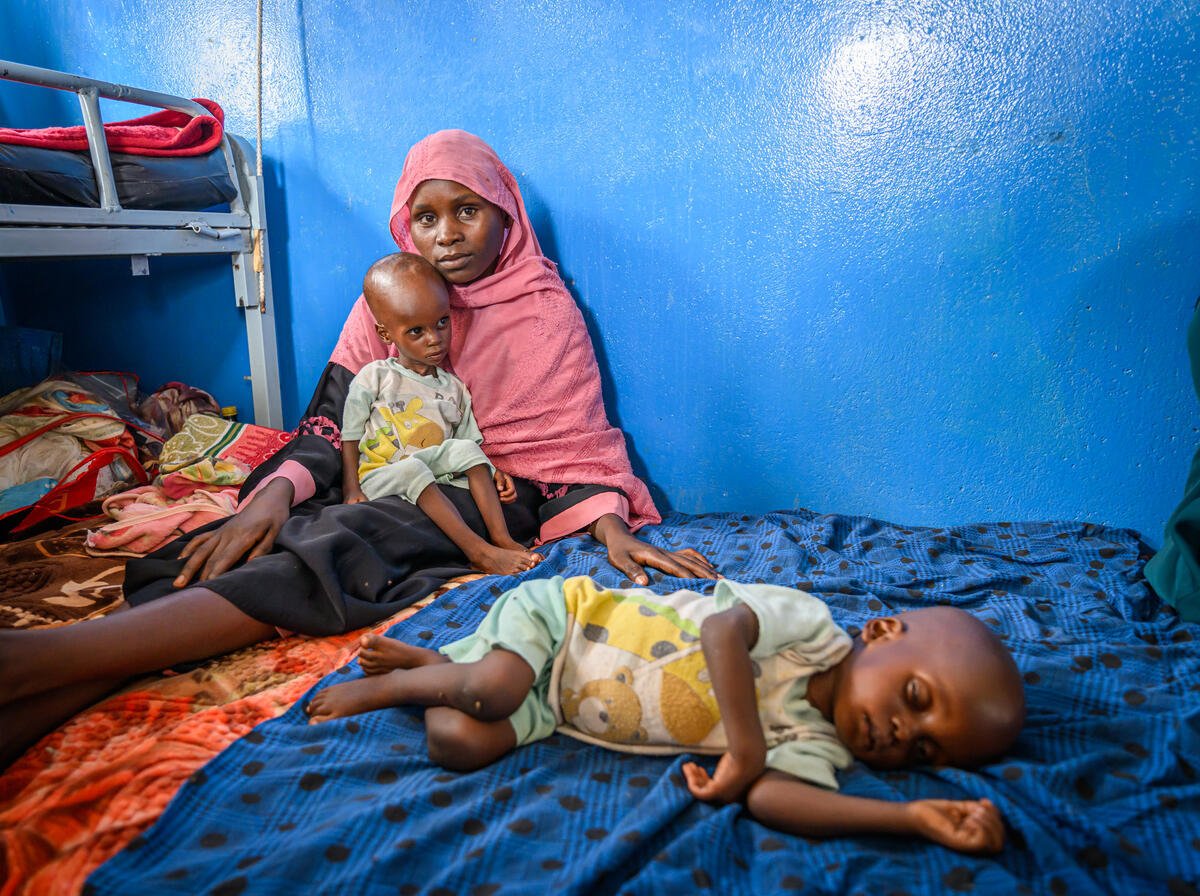
Among the lives touched by our support are twin boys Adam and Adeeb (pictured above at 21 months in May 2024) whose story shows both the challenges and hope within the crisis. Their mother, Tahani, undertook a courageous journey from her community in Sudan to the border of Chad, walking all the way to Farchana with one of the twins in her arms while a relative carried the other. “I faced shooting and people killing people on the road when I started coming,” Tahani said. “Houses and villages were on fire.”
When our staff met the twins in May 2024, they were severely malnourished. Adam weighed only 13 pounds.
While they endured unimaginable violence and displacement, they are now finding strength through critical support — including nutrient-rich food — they’re accessing through a health center, which World Vision is helping to expand. Improvements, including new water systems and electricity, have strengthened the center’s ability to care for and treat malnutrition cases. The twins, pictured below in September 2024, are no longer in a critical state of malnutrition. Adam and Adeeb are being monitored during their recovery by World Vision staff.
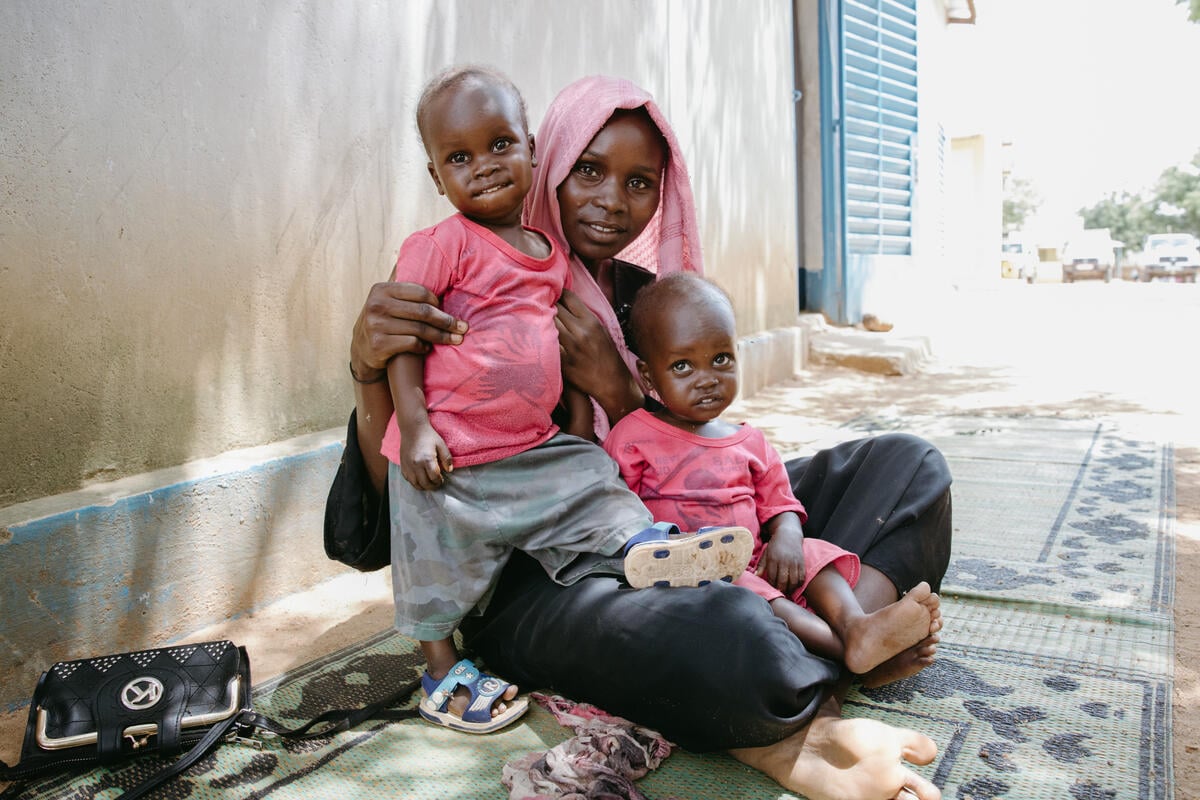
Where has World Vision worked in Sudan, and for how long?
One of the largest humanitarian aid organizations in Sudan, we are headquartered in Khartoum. Our local staff work with volunteers and partners primarily in four states: South Darfur, Blue Nile, East Darfur, and South Kordofan. We’ve served children and families in Sudan from 1983 to 1988 and from 2004 onwards, initially responding in Darfur.
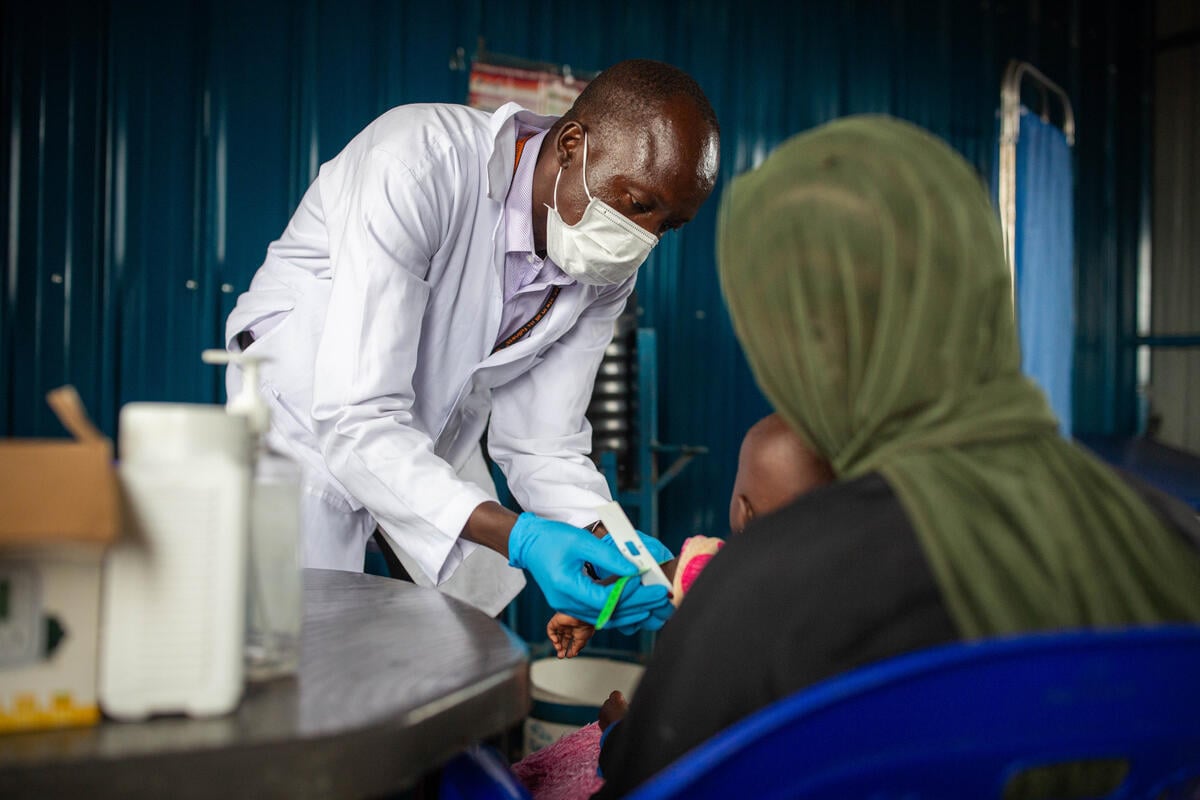
How can I help children and families affected by the crisis in Sudan?
- Pray: Join us in praying for all those affected by the conflict in Sudan.
Heavenly Father, we come before You with heavy hearts, lifting up the people of Sudan in their time of need. We pray for the safety of children, families, and World Vision staff, asking for Your protection and guidance as they navigate these dangerous times. Lord, we lift up those suffering from the hunger crisis, and we pray for provision and nourishment during this time of scarcity. We ask for Your special protection over women and girls who are particularly vulnerable to violence. Shield them from harm and give them strength and courage.
Lord, we plead for an end to the fighting and ask that Your peace, which surpasses all understanding, take the place of conflict. In Your mercy and grace we trust and hope. Amen.
- Give: Your gift today will help deliver essential care to children and families made vulnerable by the crisis in Sudan.
